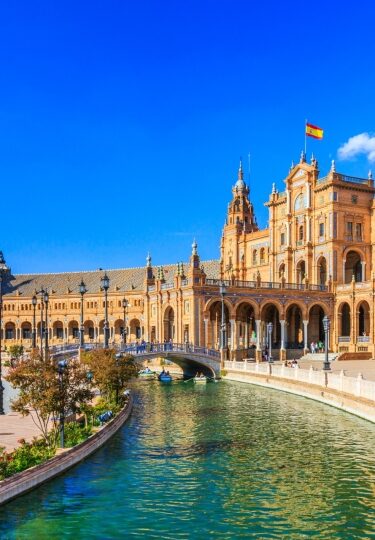Soaked in sunshine, steeped in history, soundtracked by flamenco, and sprinkled with museums, you’ll find plenty of things to do in Seville.
Seville is the capital of the autonomous Andalusia region, ruled by Moors from the 8th to the 15th century. As such, its architecture stands apart from that of Barcelona and Madrid. In and around the Barrio Santa Cruz, a central neighborhood of snug streets and sizable landmarks, you’ll see countless examples of Moorish buildings alongside vestiges of this former Jewish quarter.
But it wasn’t just Islamic culture that left its mark on the city. Phoenicians created sherry in the towns south of Seville, Romans built a megacity on its fringes, and myriad cuisines have influenced the city’s trove of tapas. The best things to do in Seville may involve food, dance, cultural experiences, or architecture, whatever your passion.
Tour the Royal Alcázar of Seville
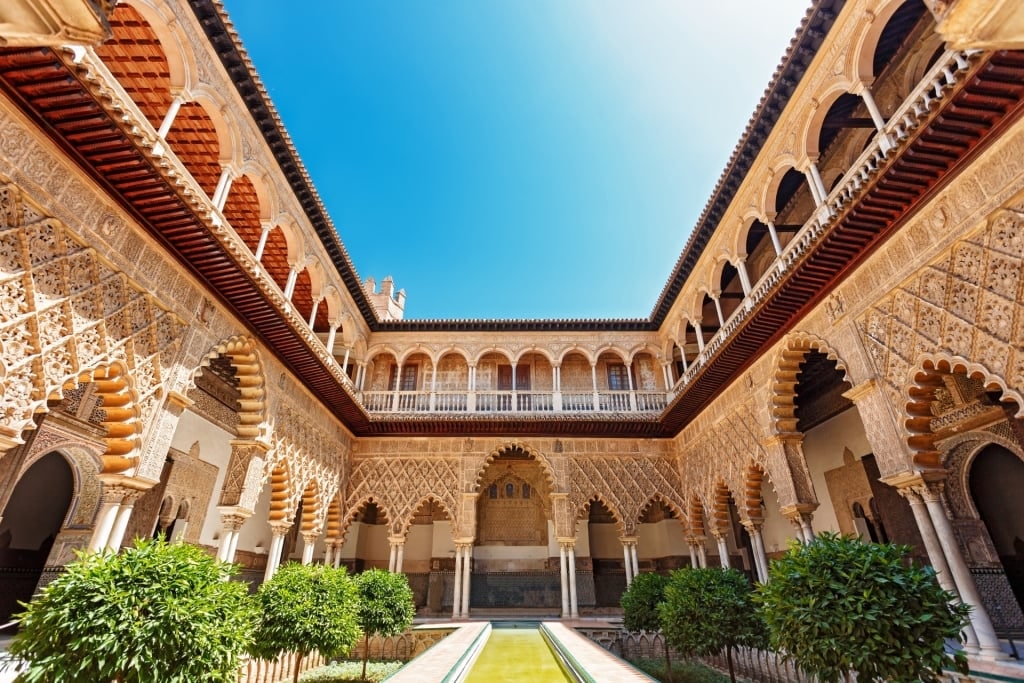
Royal Alcázar of Seville
The Royal Alcázar is one of Seville’s most aesthetically pleasing and history-narrating landmarks. Strolling through its spectacular and storied halls, courtyards, and grounds is one of the most unforgettable things to do in Seville.
Founded in the Middle Ages, the Royal Alcazar of Seville complex has a predominantly Moorish appearance. Since then, this Spanish landmark has been expanded, adapted, and adored by numerous rulers with various structures and styles, from Renaissance courtyards to additional Mudéjar-style art.
Within its crenelated walls, you can flit between three palaces, calming courtyards, and the Cuarto Real Alto, or Royal Private Quarters, which still serves as one of the Spanish royal family’s official residences.
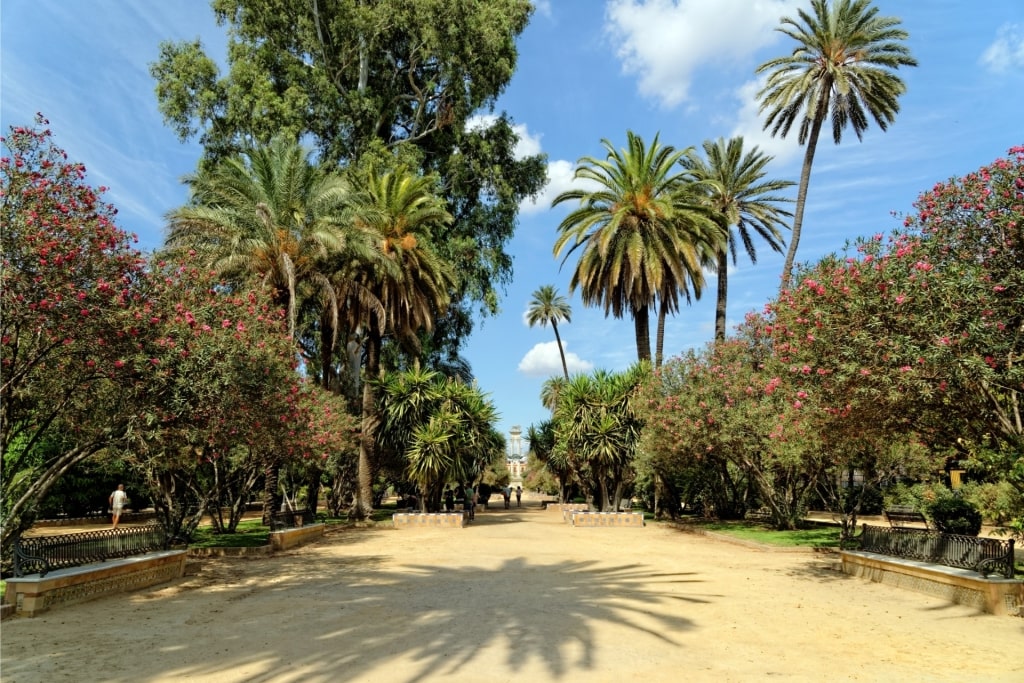
Jardines de Murillo
Equally delightful and diverse in features and flora are the Jardines de Murillo. The Alcázar’s sprawling gardens, with their mirror-like ponds, soaring palms and thousands of plant species, have provided respite to Seville’s rulers for over a millennium.
Taste Andalusian Tapas
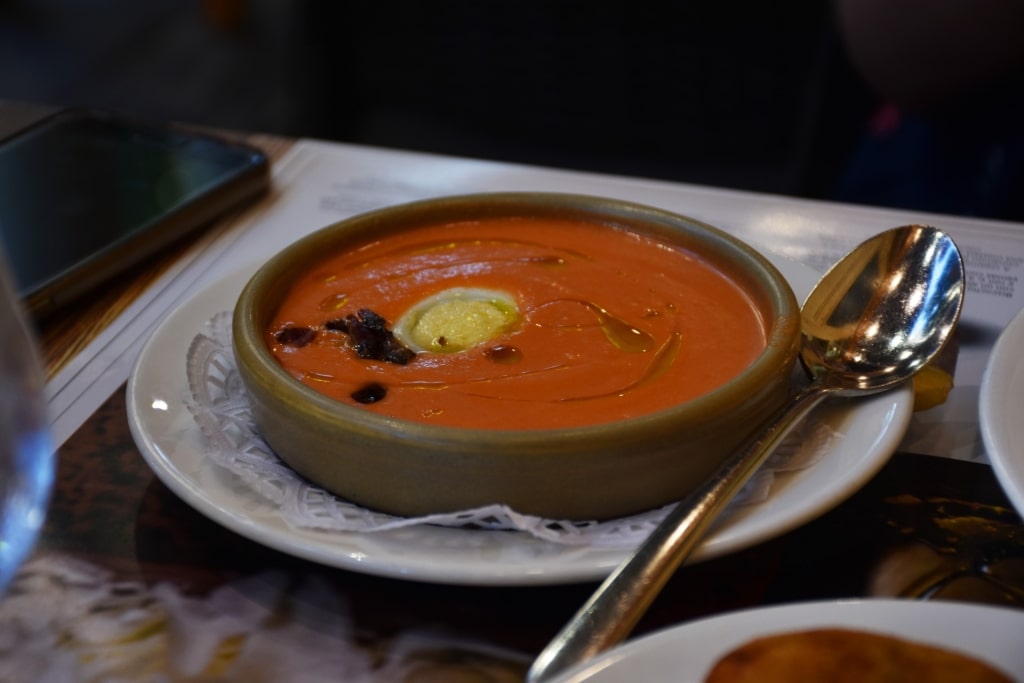
Gazpacho
The word tapa comes from the Spanish verb tapar, meaning to cover. It dates back to the days when servers would slide a little cover over drinks to keep away flies, and eventually, a small morsel was added to the top.
Where this invention took place is often debated, but Andalusia is the strongest contender for creating tapas, although Spain’s other autonomous communities may disagree. Either way, few other cities can compete with Seville when it comes to social, small-plate dining.
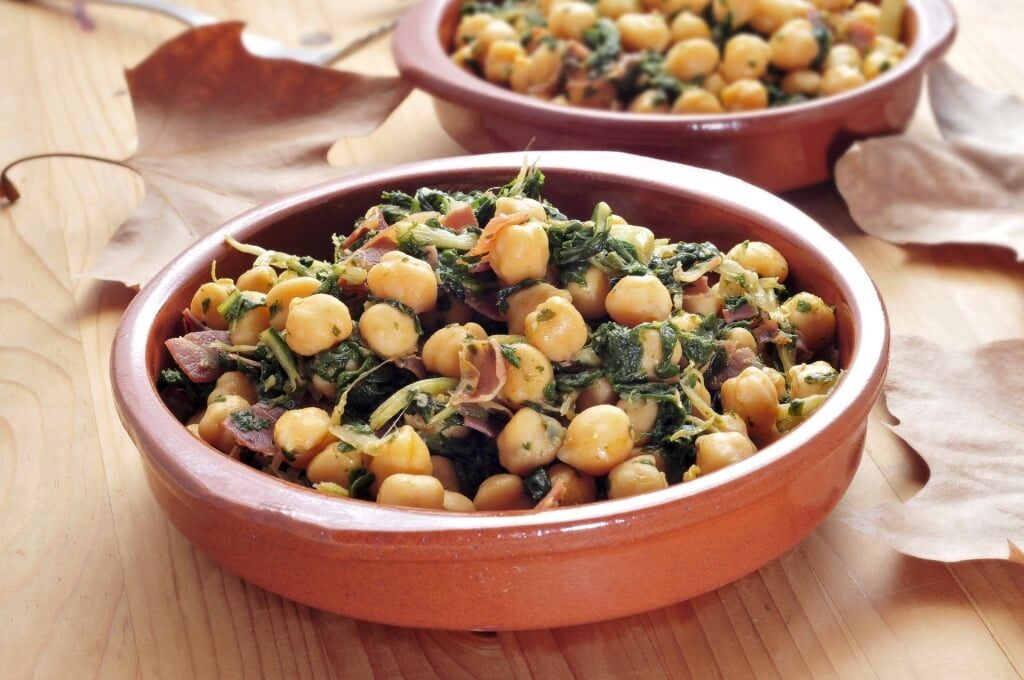
Garbanzos
Try shot-size samplings of cold Andalusian tomato-based soups, such as gazpacho or the bread-thickened salmorejo. Or garbanzos, the city’s signature dish of spinach, garbanzo beans, and cumin, and cazón en adobo, fried chunks of tender white fish.
Typical flavors from across Spain are also prevalent, such as the excellent, acorn-fed Jamón Iberico from Extremadura, crowd-pleasing croquettes, and more Catalan-style rice-based dishes. When you find your favorite tapas, upgrade to a full-size portion, known as raciones.
Marvel at Sensational Seville Cathedral
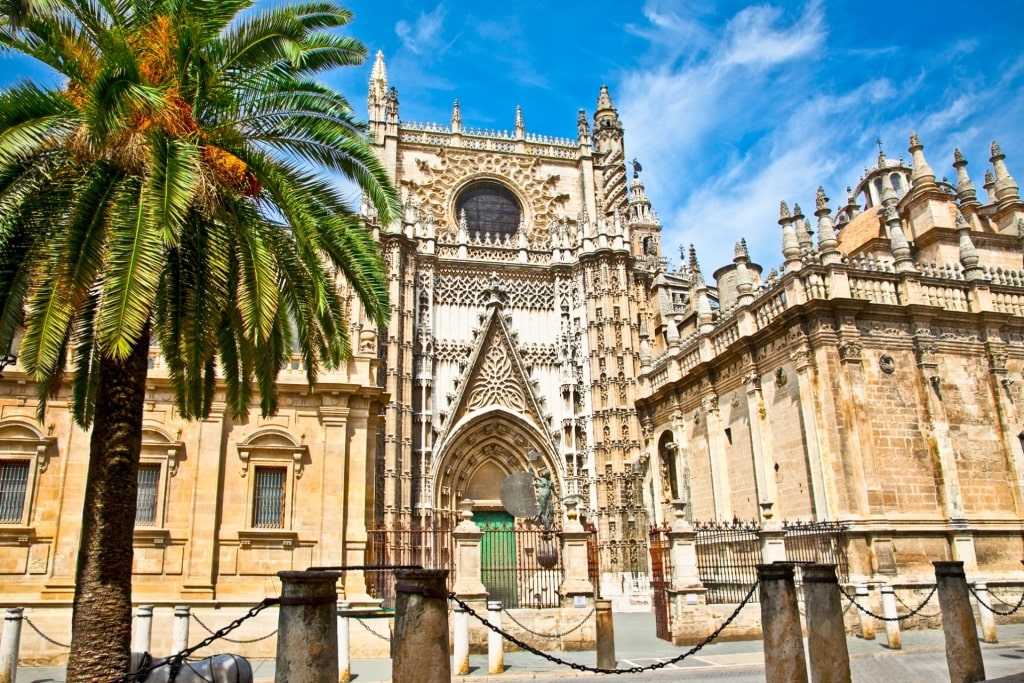
Seville Cathedral
Seville’s hulking, hardy centerpiece cathedral is one of the anchors of the historical city’s UNESCO World Heritage Site status. Seeing its soaring nave is one of the top things to do in Seville.
Constructed in the location of Seville’s former mosque, the building was converted into a church in 1248 after King Ferdinand III reconquered the Spanish city, driving out the Moors. Officially called Santa María de la Sede, the edifice is the world’s largest Gothic cathedral. You’d need a bird’s-eye view to grasp its scale.
Inside, the highly intricate webbed ceilings are as astonishing as the exterior’s façade and distinctly designed doors. Renaissance, Neoclassical, and Baroque elements converge, each turn of a corner presenting another architectural surprise, including the tomb of Christopher Columbus.
Climb La Giralda Tower
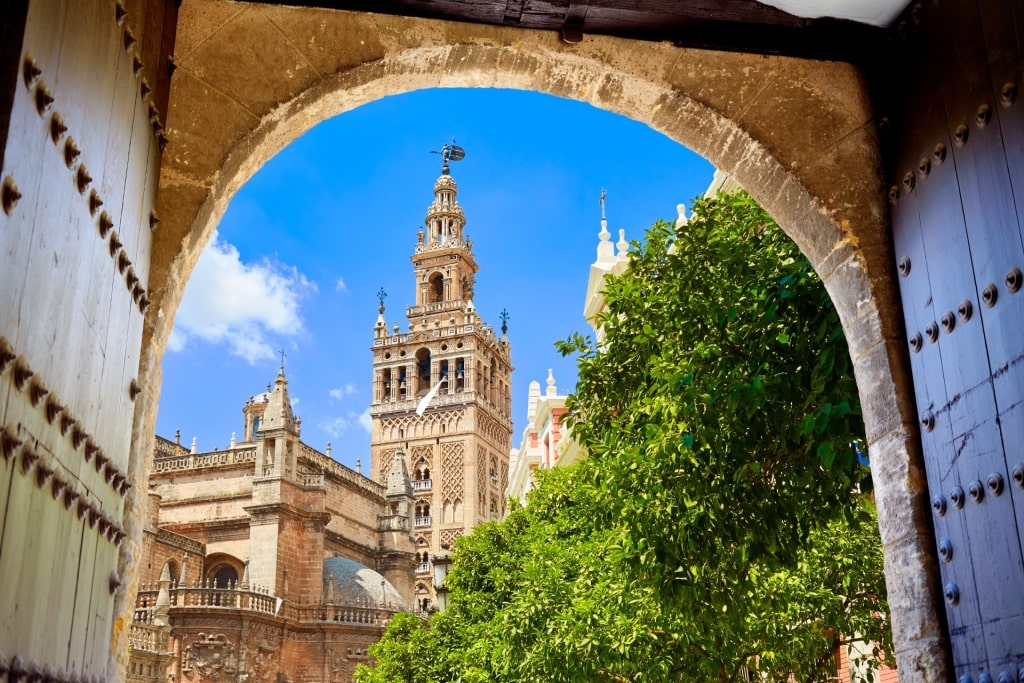
La Giralda Tower
La Giralda Tower adjoins the cathedral, yet it’s more than deserving of its own special mention. Once an Arab minaret echoing the call to prayer, the now slightly taller La Giralda is decked with 24 bells. It can be quite the soundtrack if you’re under the belfry when they start to ring.
Reaching the top of the tower is an experience in itself. Given that La Giralda reaches a lofty 340 feet, countless stairs are expected. Yet the tower only has a few dozen steps to reach the viewing platform.
Instead, the interior of the tower gradually climbs on a series of ramps leading to the heavens—a unique design that allowed horses or mules to be ridden to the top in the days when the muezzin had to issue the call to prayer.
Though there are no hoofed friends to carry the weight these days, the views are rewarding enough. From the panoramic deck, Seville spills outwards, and you can start to appreciate the cathedral’s proportions.
Pick Your Perfect Palace
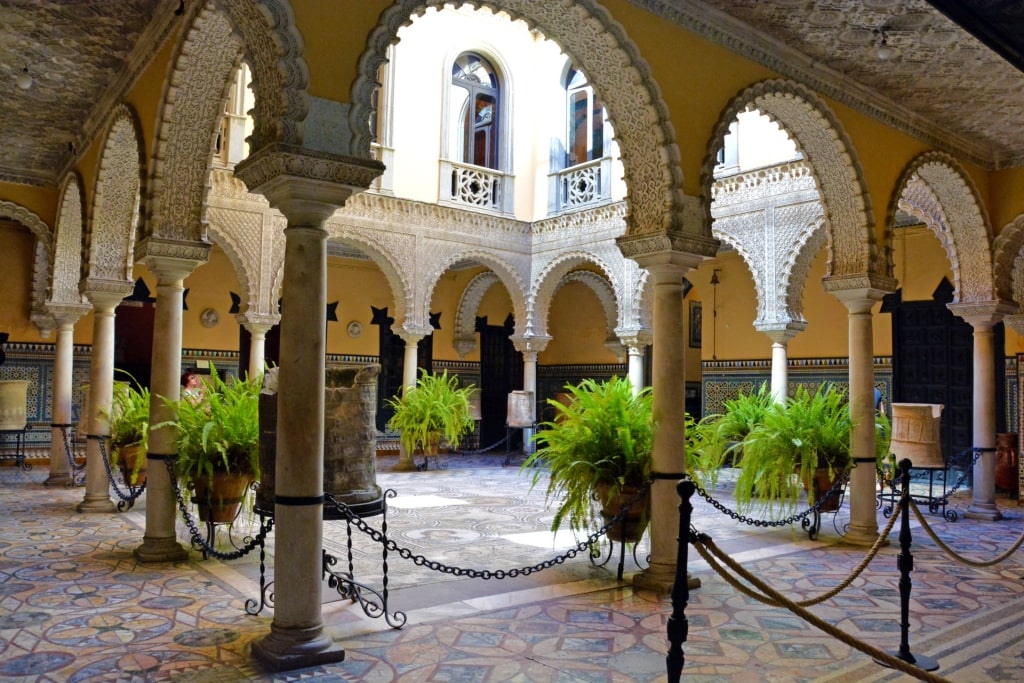
Palace of the Countess of Lebrija
While the Alcázar might be Seville’s most famous palace, it’s far from the only regal building in this beautiful city. A handful of smaller, though no less enchanting palaces are open to visitors, sharing the stories of some of Seville’s most affluent citizens of the past and present.
The 15th-century Casa de Pilatos is one of the most famous, but the Palace of the Countess of Lebrija is arguably the most impressive. Exploring its decadent rooms and courtyards is one of the most magical things to do in Seville.
Constructed in the 16th century, the wealthy home didn’t fall into royal hands until the start of the 20th century. But when it did, it got a magnificent makeover.
Setting out on a painstaking restoration mission, the Countess set her sights high, sourcing Roman mosaics to decorate the floors, ornate features from other palaces that were and moved to her new hideaway, and artifacts from ancient Greece. She has created a mind-boggling museum of European and Arabic splendor.
Soak up the Santa Cruz Quarter
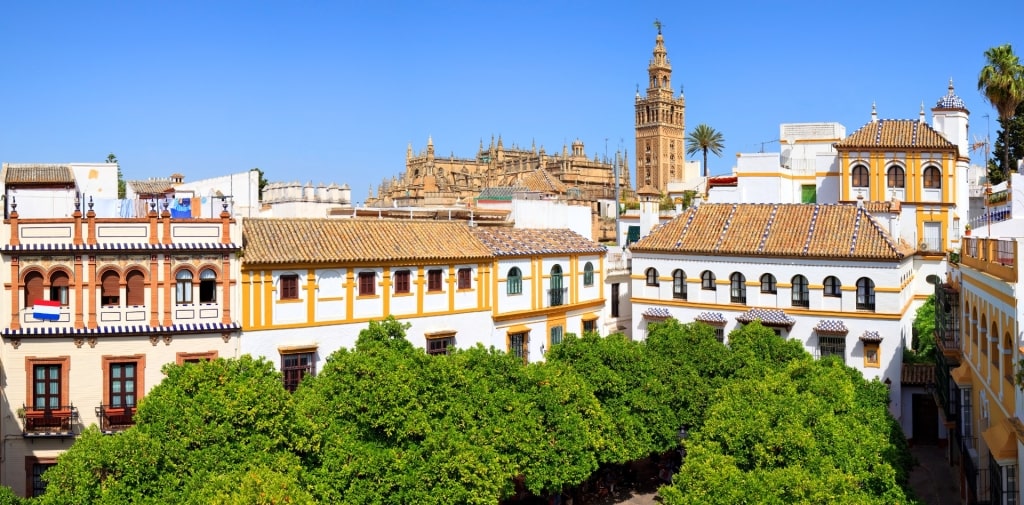
Santa Cruz Quarter
Barrio de Santa Cruz was Seville’s Jewish Quarter in the mid-15th century before the Alhambra Decree, which led to the Jewish expulsion half a century later. Spread around the outskirts of the Alcázar’s walls, it’s a world away from the spacious, stately halls next door.
A labyrinth of whitewashed wedged homes hemmed in mustard yellow, tapering laneways, tucked-away tapas bars, and teeny squares with trickling fountains, Santa Cruz is one of those places seemingly designed to disorientate you. The difference is that getting lost here is a joy.
Convents, churches, and the ancient synagogue of Seville, once a mosque and now a church, afford insight into Spain’s often fraught and difficult history. Nowadays, it’s a joyful, photogenic, and favored district that feels almost like a village at the heart of one of Spain’s most beautiful cities.
Photograph Pretty Plaza de España
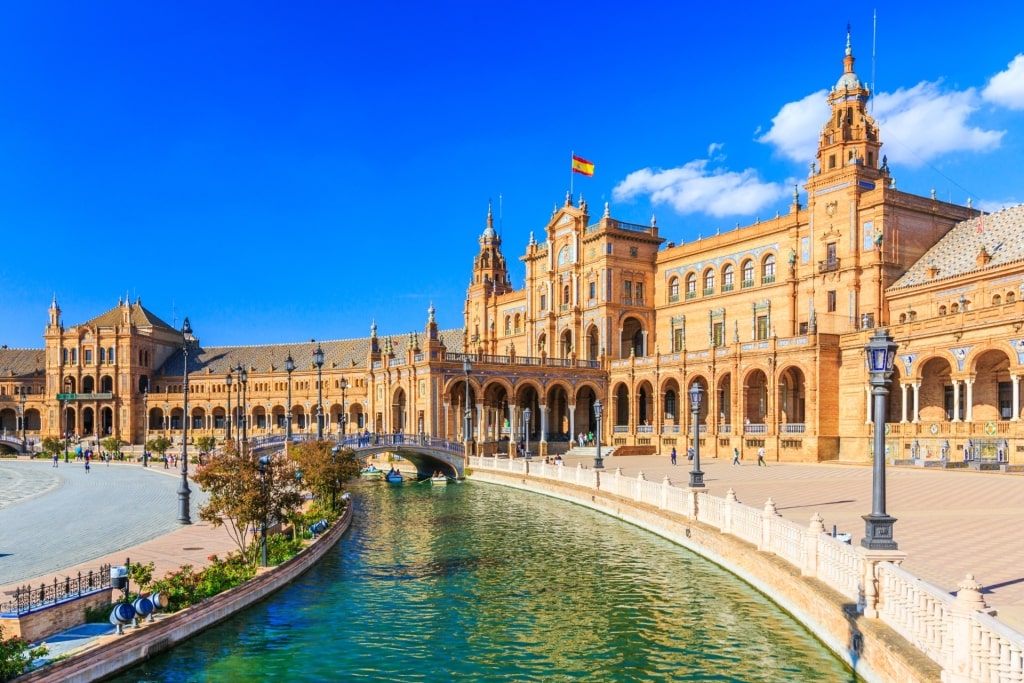
Plaza de España
Plaza de España is one of Seville’s, and indeed Spain’s, most sensational public squares, even though it lacks the historical story of many.
Only constructed in the early 20th century for the 1929 Ibero-American World Fair, the semicircular building-backed square was designed to depict all the provinces of Spain.
This was achieved by adding hand-painted ceramic tiles to the plaza’s many benches and lower levels. There’s no finer place in Seville to combine people-watching with gaining artistic interpretations of the whole country.
Stroll under the shaded arcade, often with a live flamenco soundtrack, before crossing the pretty, ceramic-decorated bridges arching over the water channels, and you’ll struggle not to be enchanted.
Take in the Passion of Flamenco
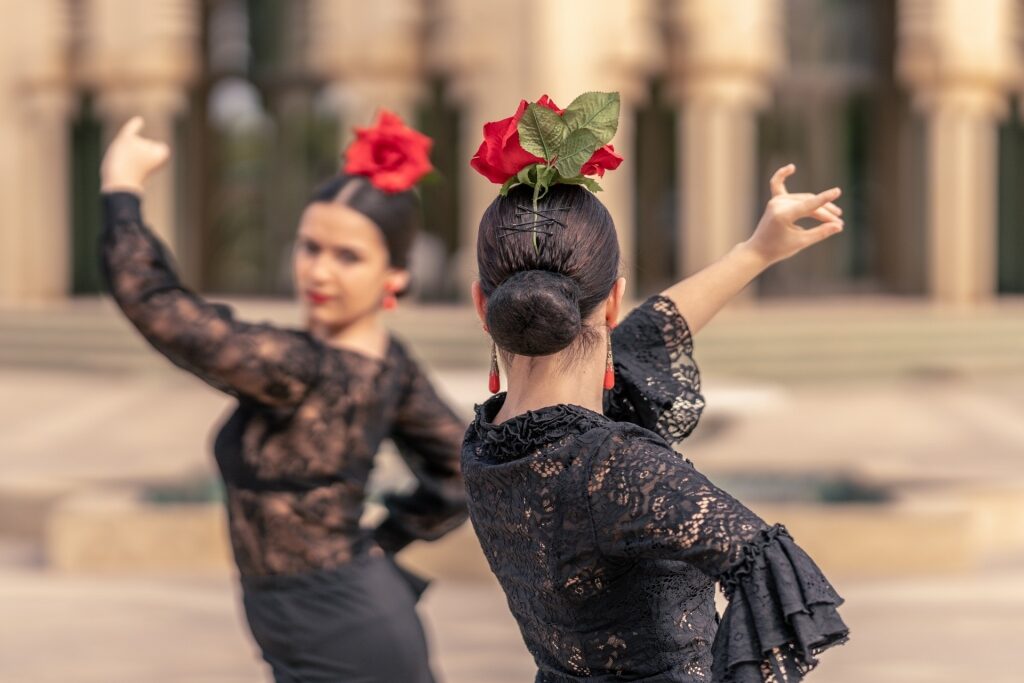
Flamenco
Watching a flamenco performance is one of the finest things to do in Seville for a fiery and animated look into the Andalusian soul.
A passionate, devoted, and deep art form, flamenco is a fusion of music and body percussion dancing. Castanets, guitar, and infectious rhythms accompany the almost interpretive and intense dance, with the often fiery red, long-tailed Bata de Cola dresses adding even more flamboyant flair.
While the dance’s exact origins are debated—some believe it was invented by the Moors and others by the Roma people who arrived from India—Andalusia is accepted as its cradle.
All across Seville, from Plaza de España’s outside and sometimes impromptu performances to presentations in dedicated flamenco bars and cultural spaces, the call of hypnotic foot-stomping rhythms can be heard.
Find Fine Art in the Museo de Belas Artes
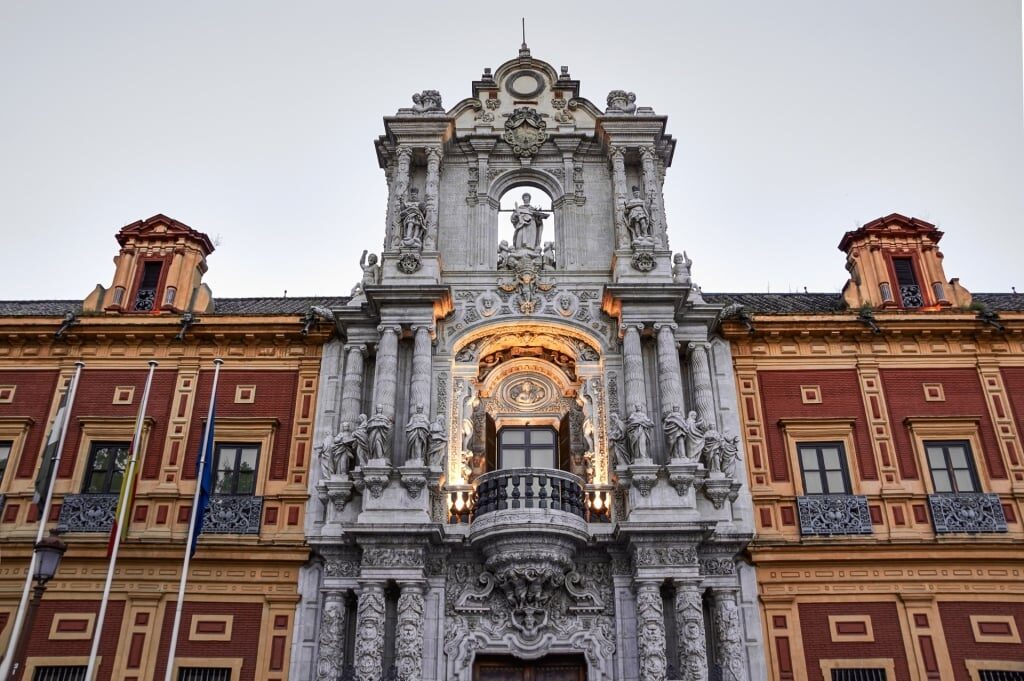
Museo de Belas Artes
Seville has no shortage of prized Spanish museums, but its most treasured is the Museo de Belas Artes, the city’s Fine Arts Gallery.
Even before you cross the threshold, the former convent’s pink-hued 17th-century facade sets the tone. Inside, Sevillian art is particularly well represented, with a vast collection of local and regional paintings from when the museum only specialized in canvas.
Now stacked high with sculptures, ceramics, and numerous other fine art pieces, including the revered religious depictions by Francisco de Zurbarán, the museum is a marvelous way to escape the midday heat.
See it all Atop Seville’s Mushrooms
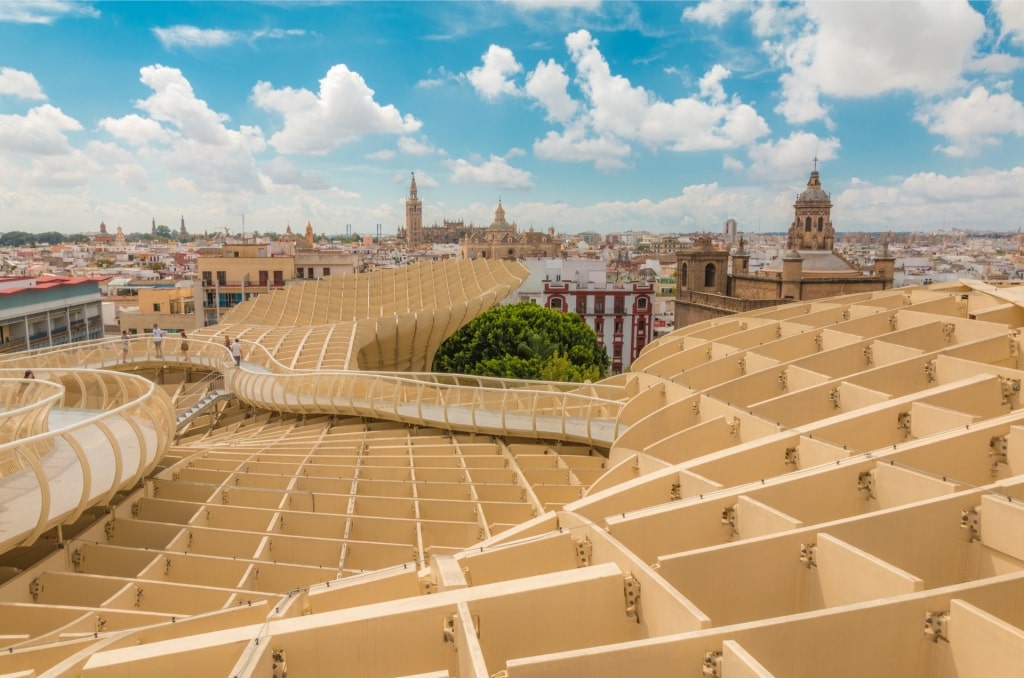
Setas de Sevilla
The Setas de Sevilla, or Mushrooms of Seville, aren’t a local tapas specialty but rather the city’s contemporary and once controversial parasol. Erected over Plaza de la Encarnación in 2011, they have since become one of Seville’s most photographed features.
Not that this incongruous construction is simply an art installation; it’s also believed to be the world’s largest wooden structure, constructed from Finnish pine and acting as a shade-giving and viewpoint-providing platform.
You can walk atop the interlinked patch of “mushrooms” to admire a different panorama of Seville’s rooftops from its flat cap.
Relax in Leafy Parks
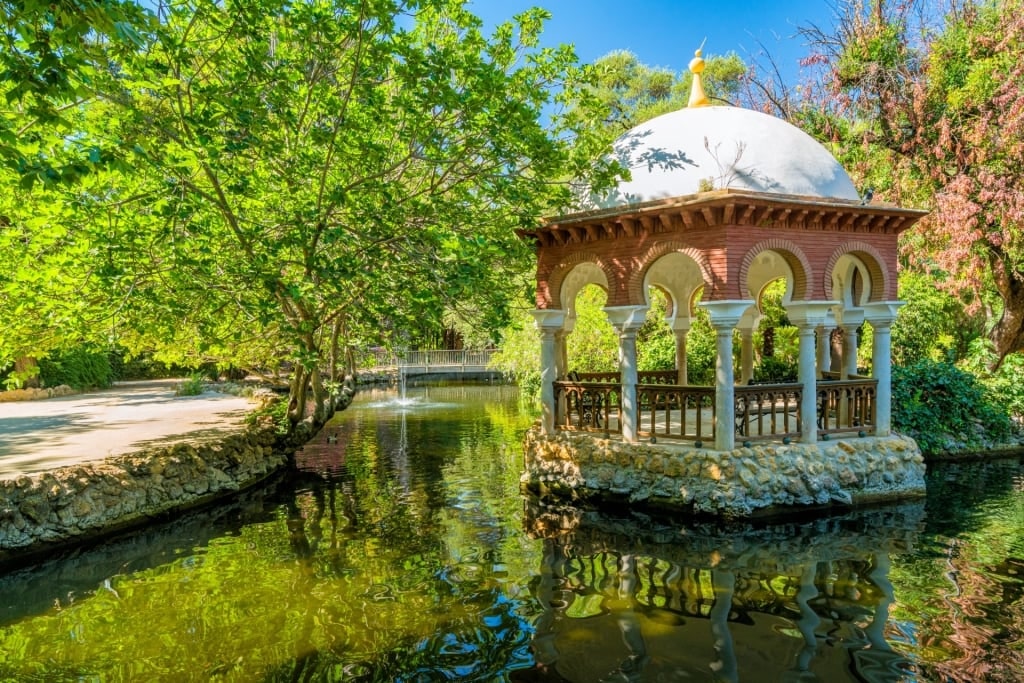
Maria Luisa Park
In summer, Seville simmers. This is one of Spain’s hottest cities. Thankfully, it’s also blessed with pockets of greenery, providing much-needed shade and animated social spaces for the city that loves to live outside.
One of the best things to do in Seville when the sun hits siesta temperatures is retreat and relax among the vegetation. Rivaling the Alcázar’s Jardines de Murillo for the city’s best green space is the leafy Maria Luisa Park opposite Plaza de España.
With well-manicured flower beds, cooling water features, a series of sculptures and, most importantly, plenty of shade-giving trees, the French-designed gardens are a summer’s day godsend, especially when you stumble upon one of the kiosks selling ice cream.
Meander Through Memorable Markets
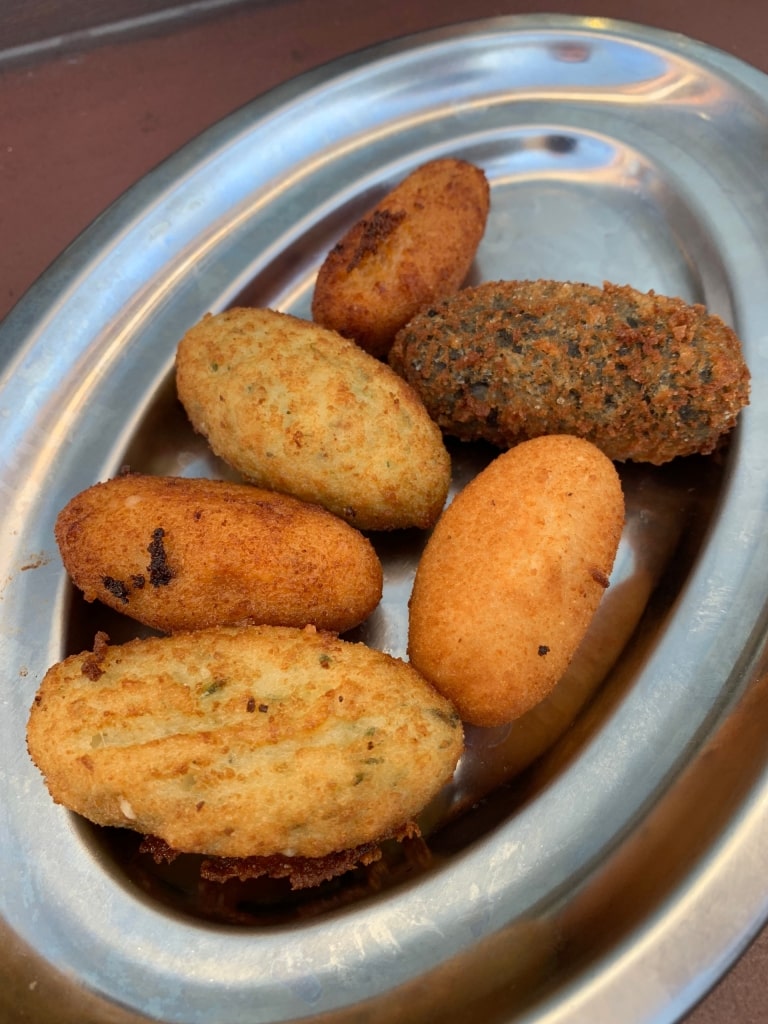
Mercado Lonja del Barranco
Seville’s surplus of weekly markets selling everything from antiques and olive oil to citrus and ceramics provide a treasure trove of Spanish souvenir opportunities. However, if you’re looking for a more reliable, week-round choice, set your sights on the pair of contrasting mercados linked by the Puente de Isabel II bridge.
The contemporary, two-story Mercado Lonja del Barranco is a sleek, modern, galvanized iron and glass construction that functions mainly as a food court. This is the perfect place to sip sangria and sample local delights while flitting between seafood bars or relaxing on the terrace.
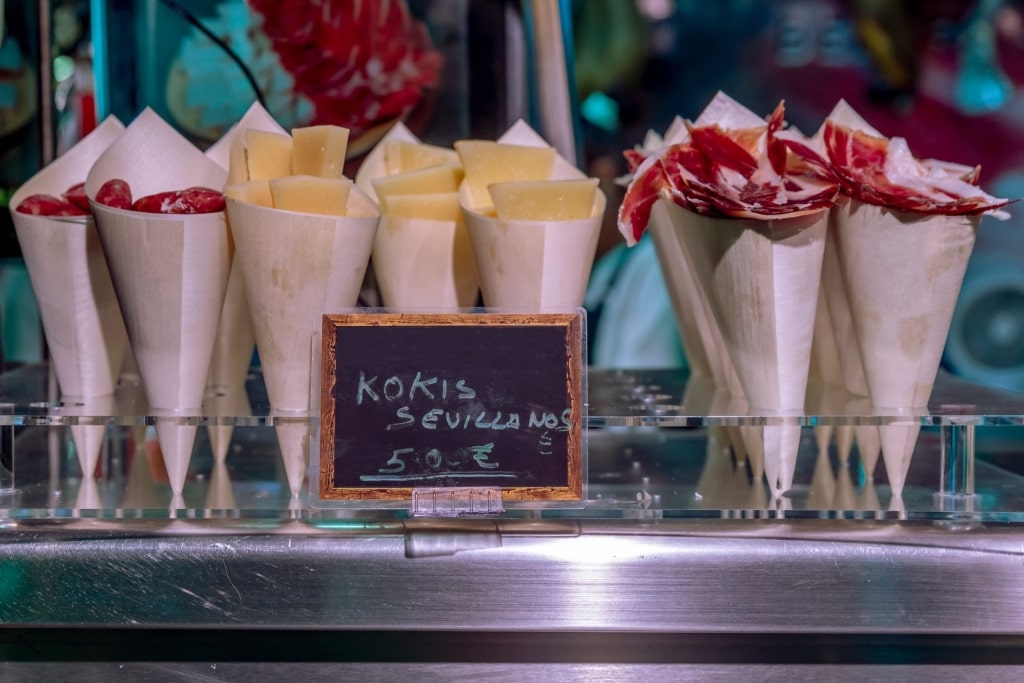
Mercado de Triana
Across the Guadalquivir River, Mercado de Triana is far more traditional. Farm fresh produce is piled high under blue-and-white tiled signs. Cured meats and specialist cheeses are swooned over, while a cooking school offers the chance to learn how to turn all the produce into a mouthwatering Spanish feast.
Take in Triana’s Ceramic Workshops
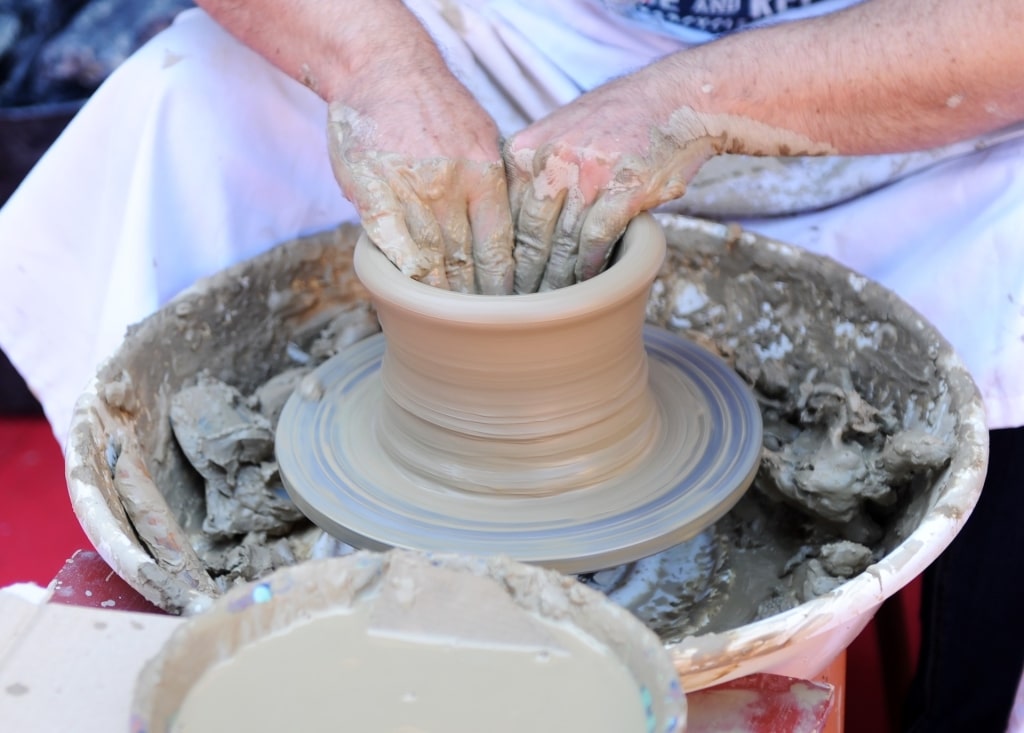
Ceramic workshop in Triana
Cherished for its centuries-old ceramics production, which historically used clay from the Guadalquivir River, it’s around Triana that you should pick up Majolica glazed pottery or vivid and colorful kiln-fired ceramic gifts from one of the artisanal shops.
But before settling on an attention-stealing new crockery set, pay a visit to the Centro Cerámica Triana. Packed with highly detailed examples of pottery alongside insights on local production methods, old and new, it’s a brief but informative introduction to Sevillian artistic history.
Relish the River From Torre del Oro
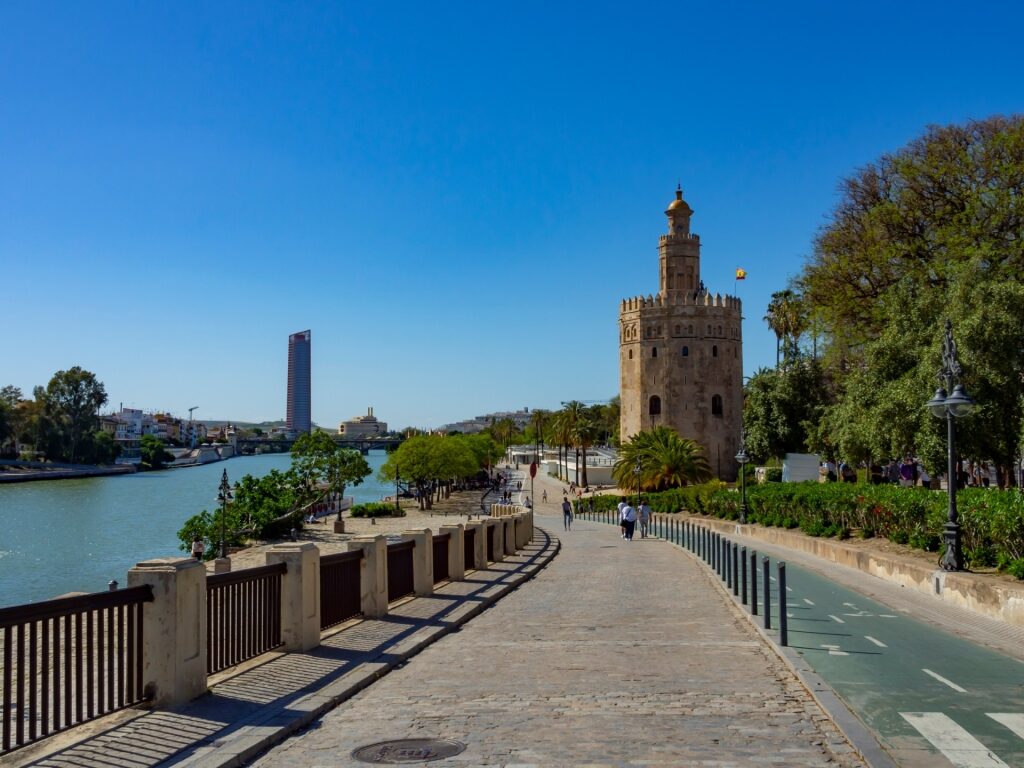
Torre del Oro
The navigable Guadalquivir River is Seville’s much-needed cooling artery. When the summer temperatures soar, life is played out on the grassy riverbanks or in bars overlooking the waterway.
But if for any reason you don’t want to take a boat trip, opt to visit one of the most famous riverside landmarks, the Torre del Oro.\
Constructed in the 13th century, the watchtower was part of the city’s old wall defenses. Back then, it was also dressed in decadent gold tiles, as its name alludes.
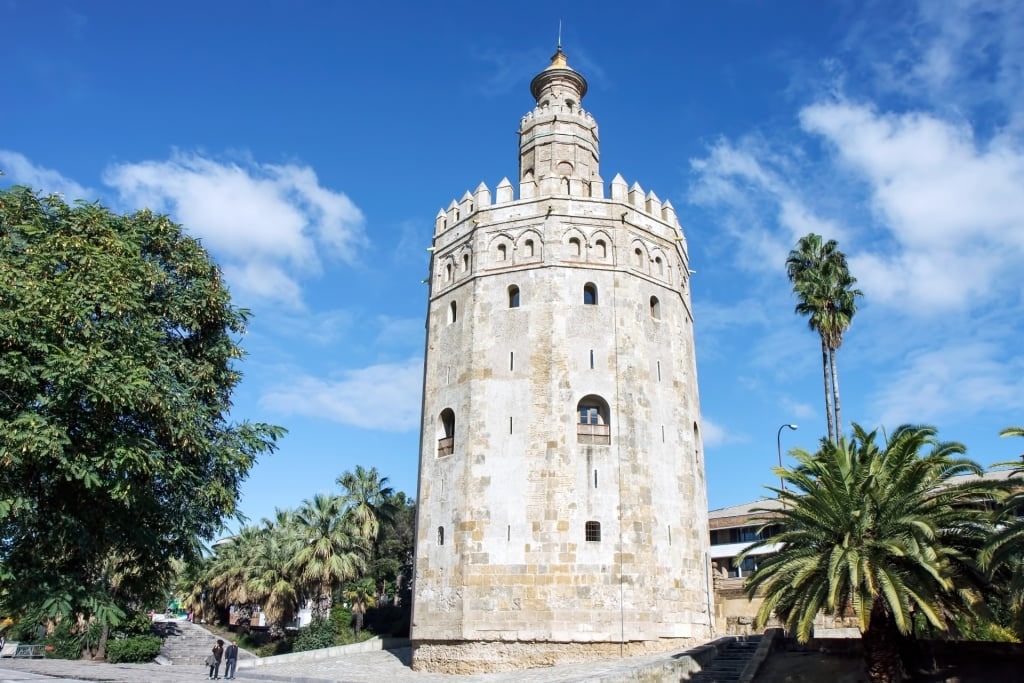
Torre del Oro
Sadly, it’s been stripped of all its former golden glory and instead is now known for the small Naval Museum of Seville lodged inside. It’s a brief visit to tour the two-story display.
Yet once you’ve stepped out onto the panoramic terrace and glimpsed the Guadalquivir from a higher vantage point, you’ll likely want to linger.
Sample Sherry in its Birthplace
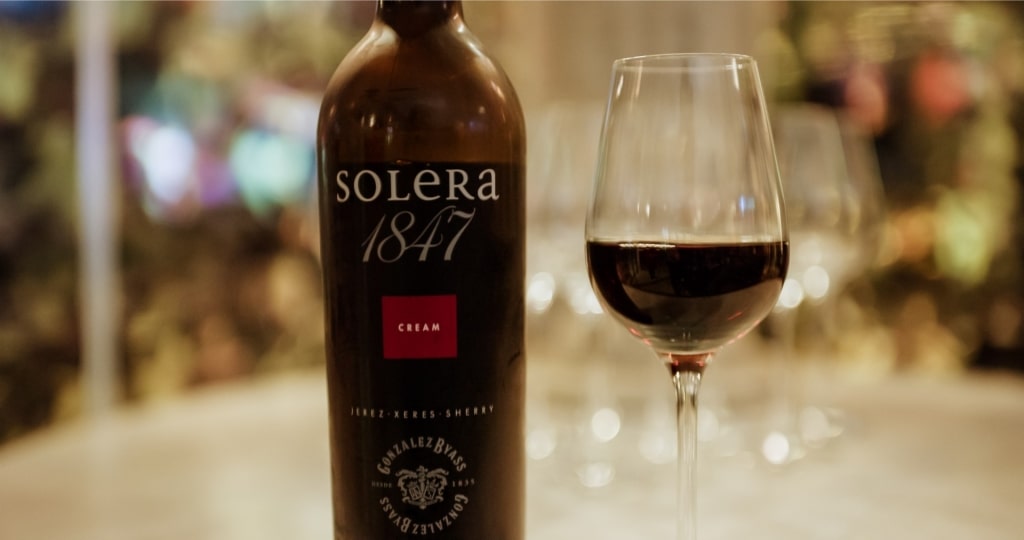
Sherry
Sherry, the fortified wine that Spain is famous for, has a story that can be traced back to at least 1000 BC. The Phoenicians first started producing this tipple in and around Cadiz, and now the “Sherry Triangle”, as the key production area is known, extends to Jerez de la Frontera, around an hour south of Seville. So why not set off to sample it at source?
It’s easy to reach Jerez de la Frontera. If you plan to explore the world-famous vineyards and estates, including the vines, it’s best to embark on a tour. With a passion for producing only the best, the master makers will shower you with the secrets of their craft, the proof being in the end-of-tour tasting.
Gaze Upwards at Hospital de los Venerables
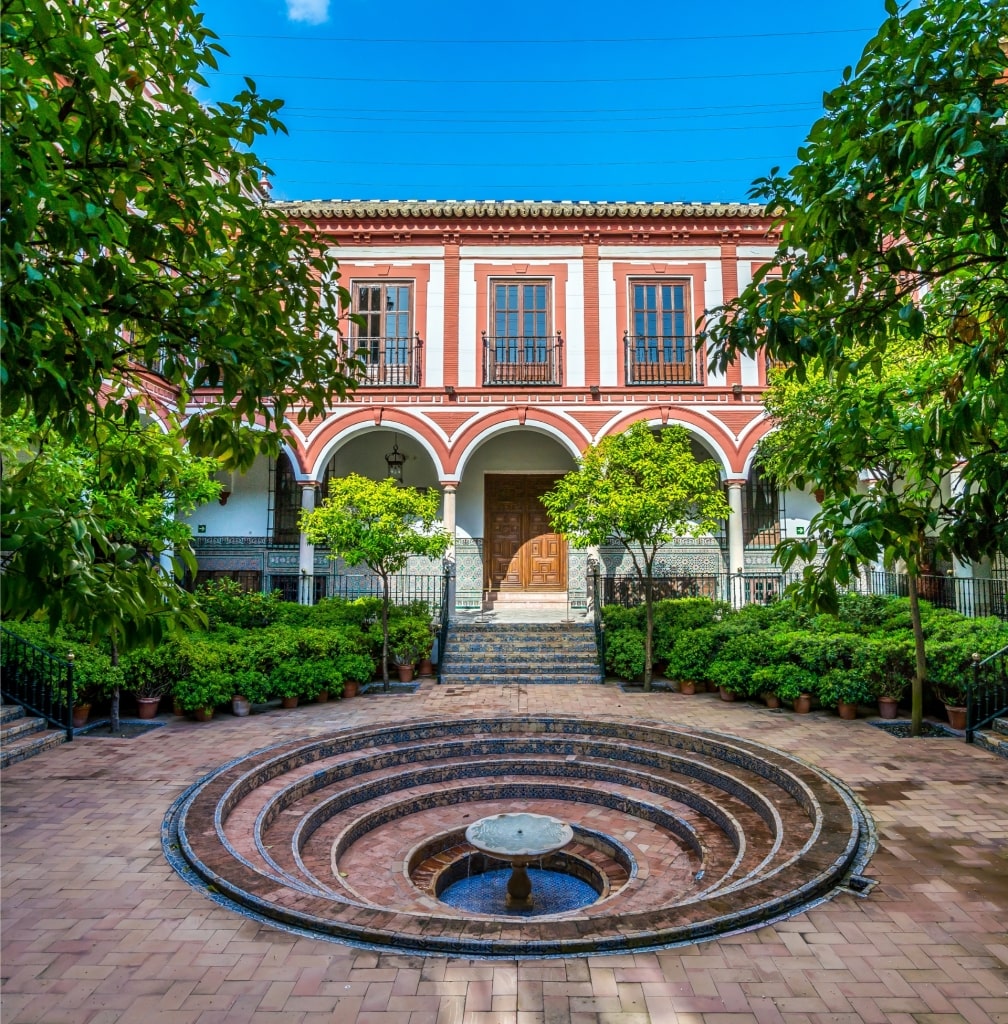
Hospital de los Venerables
Clinics are usually best avoided when traveling, but not in the case of Hospital de los Venerables. A striking 17th-century Baroque building, it was never intended for ailments. Instead, it was built to house retired priests.
Now the hospital has been converted into a museum and cultural space, the main draw for many is the dedicated exhibition center to Diego Velázquez, one of Spain’s leading 17th-century painters.
Yet others come for the astonishing artistic explosion that continues inside this Spanish church. Beautified from floor to ceiling in frescoes by Juan de Valdés Leal, another revered Spanish artist, the ceiling imagery, in particular, is outstanding.
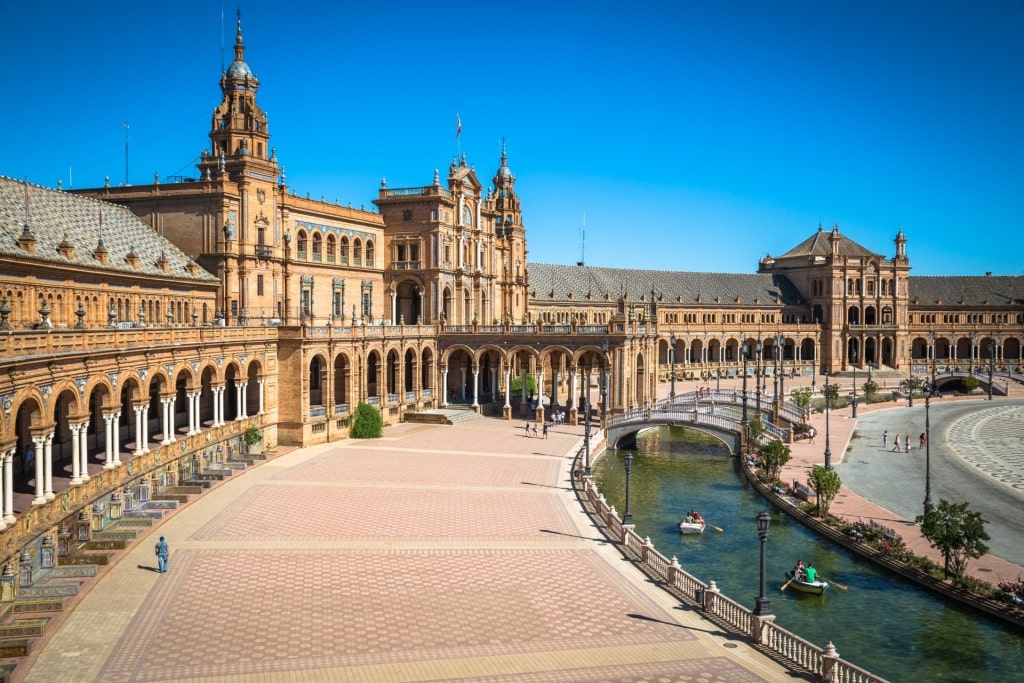
Plaza de España
Excited to plan your visit to Andalusia’s spirited capital city? Browse Celebrity’s cruises to Seville to start planning your next Spanish sojourn.
